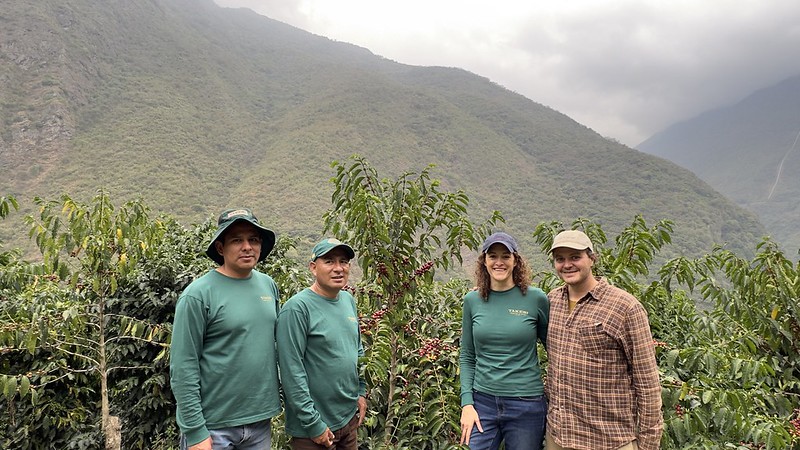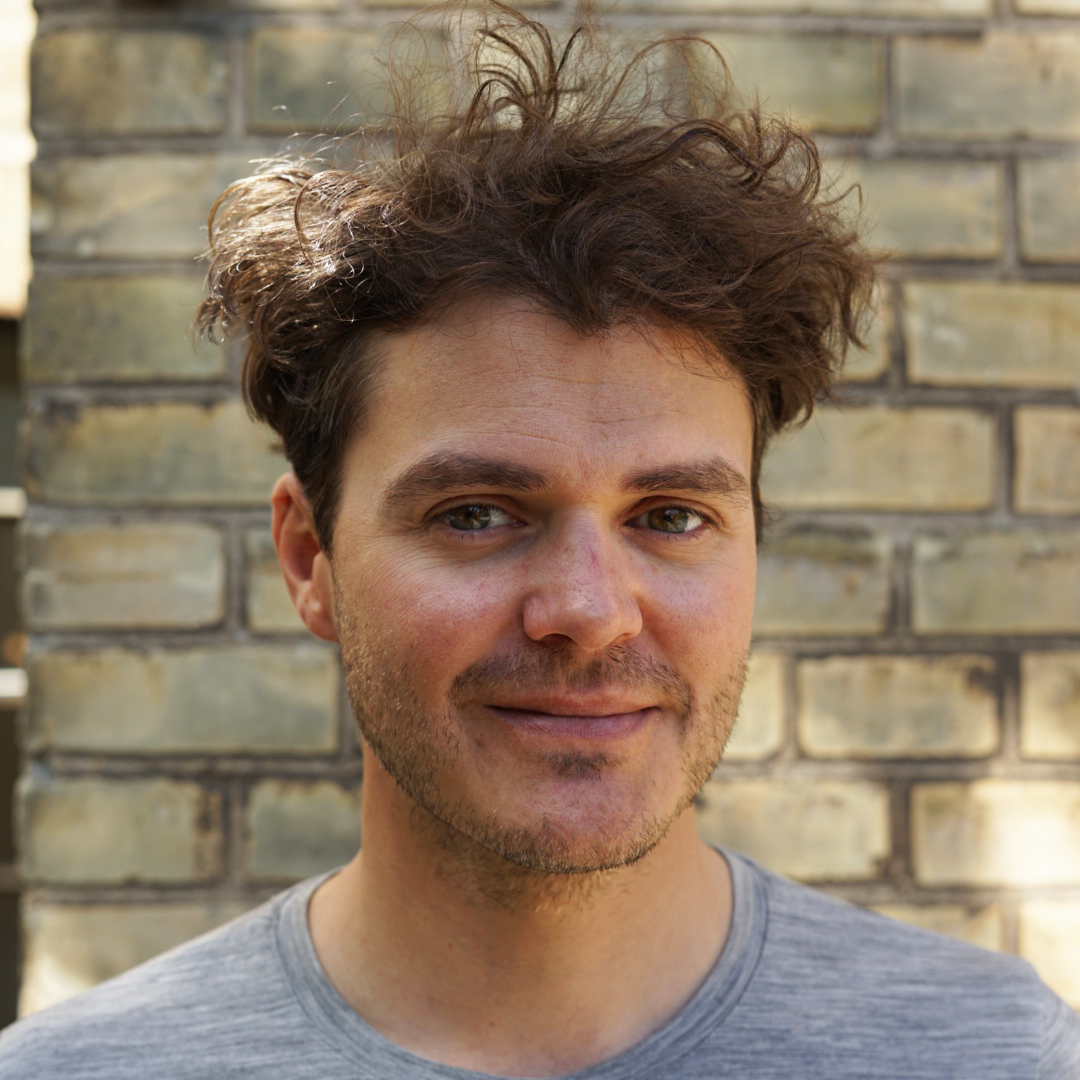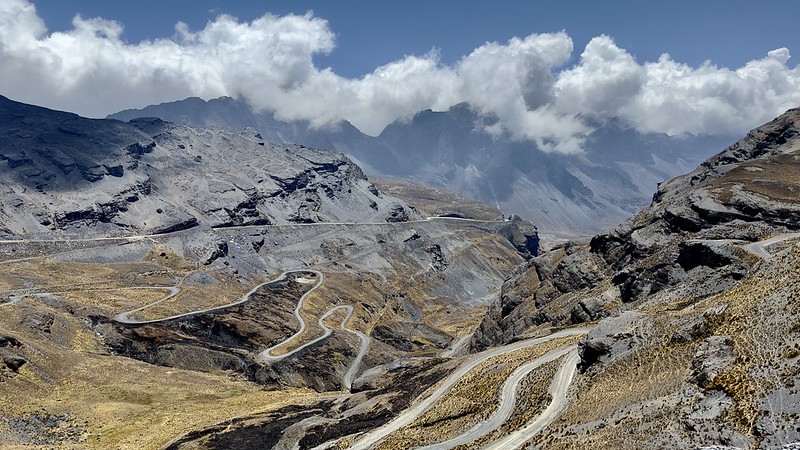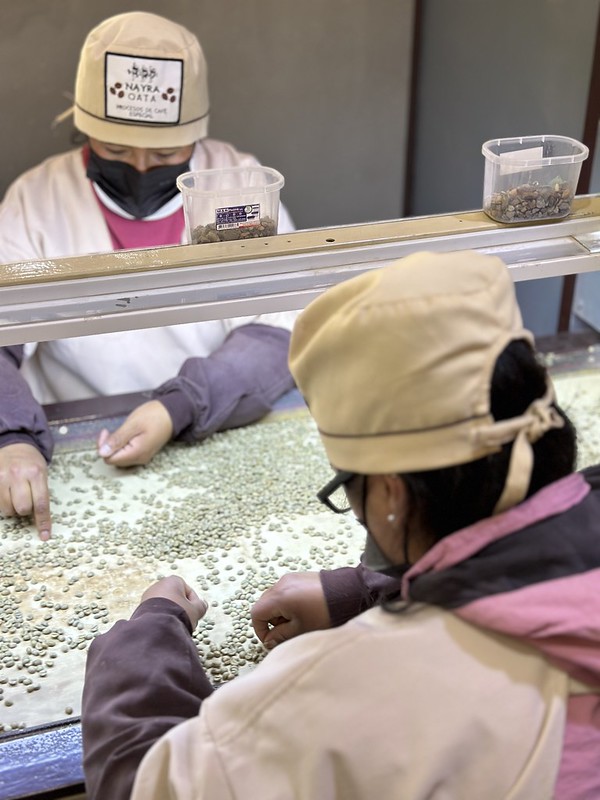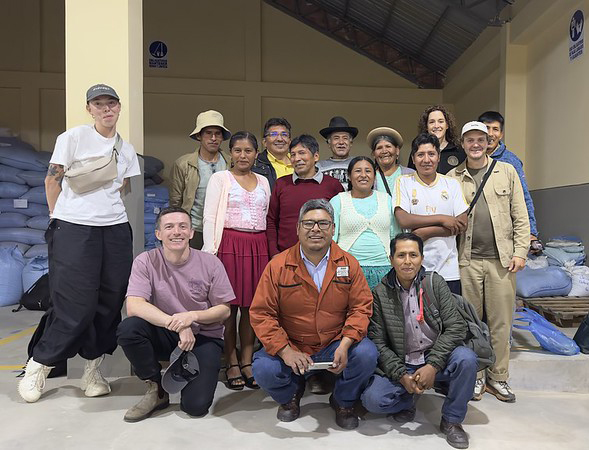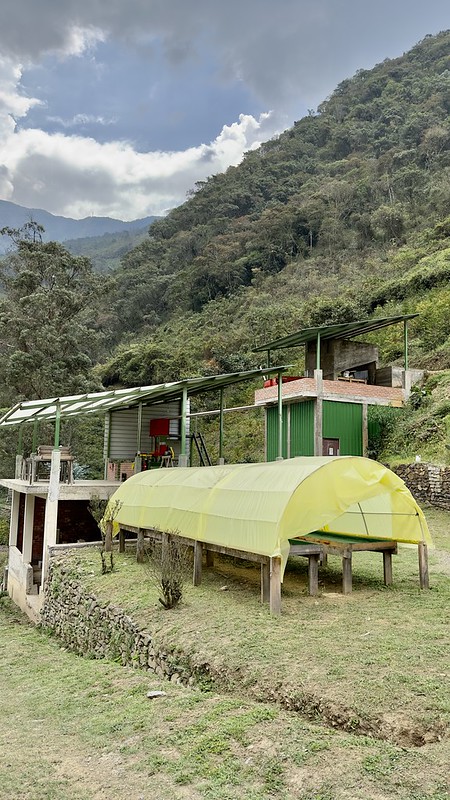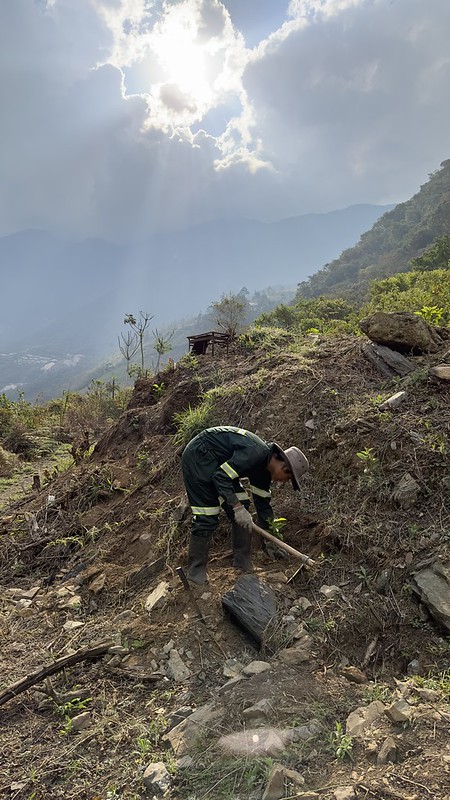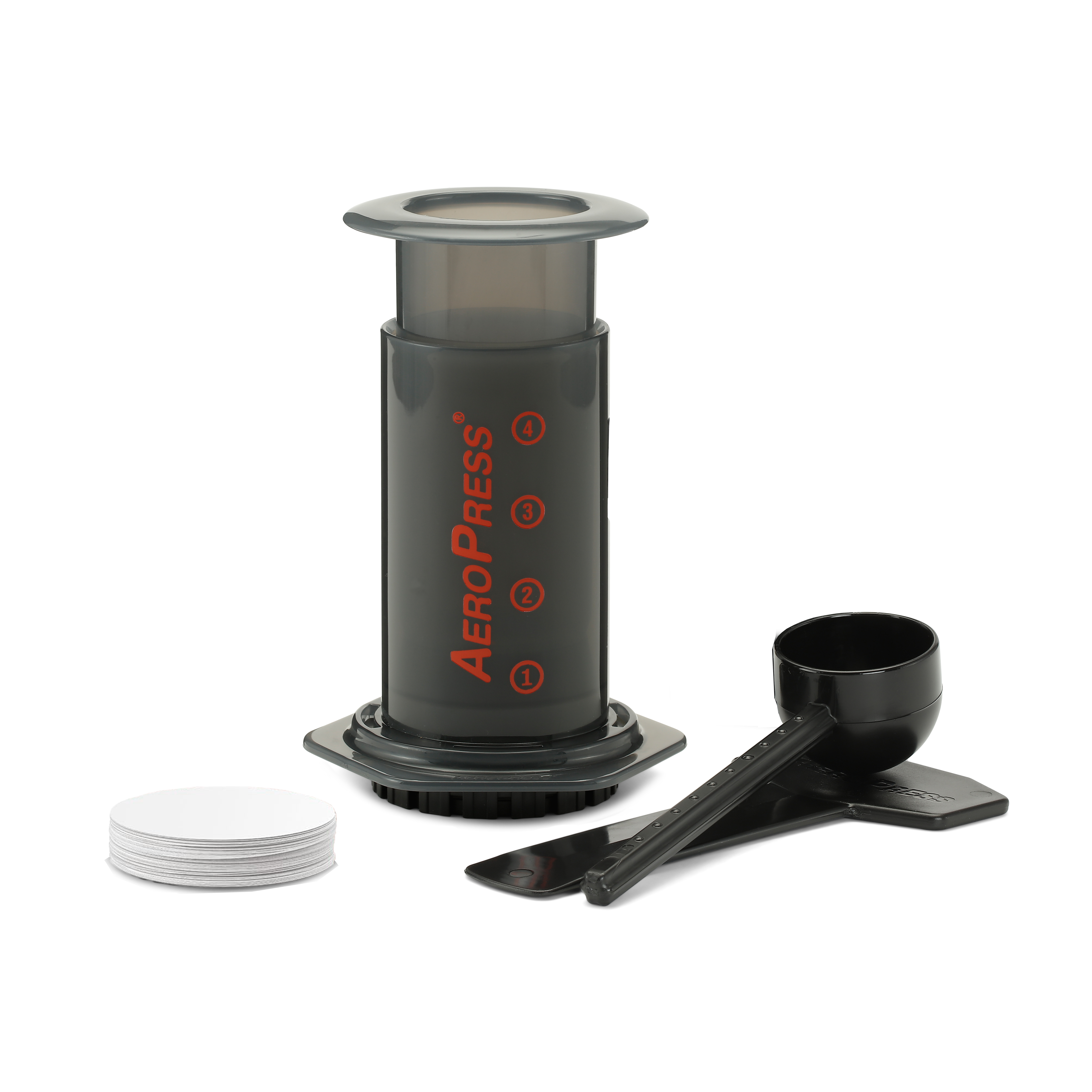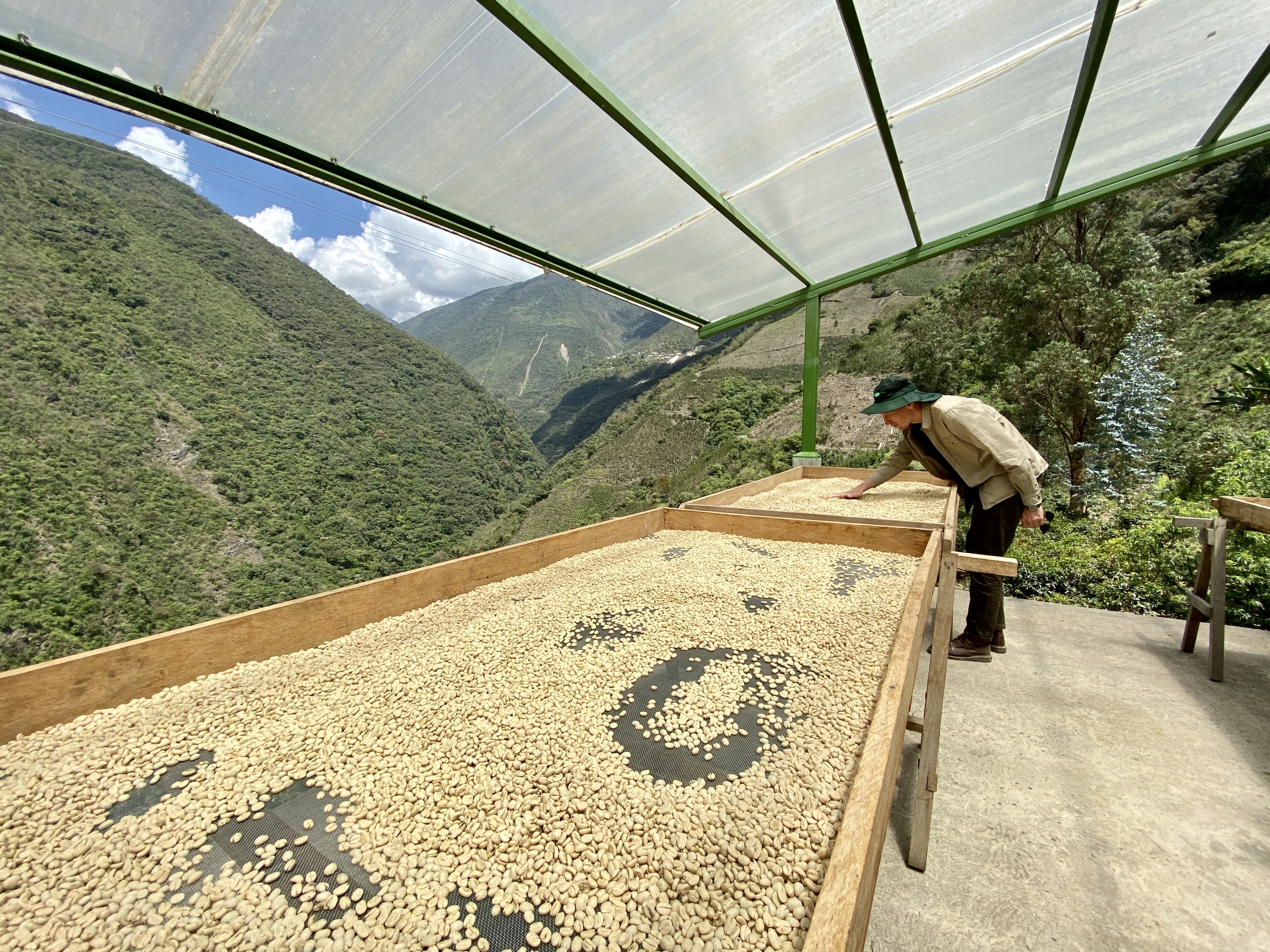Arriving in La Paz or El Alto, where the airport is located, is always something quite special. At 4,061 meters above sea level, it is the highest elevated international airport in the world. El Alto and La Paz have grown together, and the drive down the mountains to the inner city of La Paz is a breathtaking sight.
After breakfast, we headed back up to El Alto to visit the dry mill used by Takesi for sorting and cleaning their coffee. Juan Boyan has been running the mill for the last couple of years, so even though the size might seem small, the whole setup is streamlined and effective. Here, we have all the possibilities for sorting, both with and without UV lighting. Coffees are packed in vacuum-sealed boxes, and we could not wish for anything more on the quality side.
We had been planning to meet up with some small-scale organic producers at Juan's plant before heading to Bolivia. We were delighted to meet with 10 producers, whom we cupped their coffees with and scored blind together. These are all very small-scale producers, producing between 700 1000 kg of green coffee. Therefore, they cannot afford to pay for the organic certificate, which would cost each of them about $2000 USD. We tasted many coffees with great potential, scoring them by SCA standards. Many of these producers end up selling their coffees to huge buyers at prices that are below their cost of production. For producers like these, it is very hard to bring their coffees to the specialty coffee market. We discussed the cost of production, etc.
This year, we were visiting Bolivia and Takesi together with our good friend Benjamin Put from Monogram Coffee in Canada. It was great to finally spend time together at the Takesi farm. Other than battling over which lots to get, we had some great talks with the team at Takesi, focusing on quality and sharing thoughts and insights from around the world.
After an enormous beautiful drive from La Paz, we arrived at the Takesi farm located just at the foot of the giant Mururata mountain. This year, there have been a few minor upgrades done to the farm. Takesi has finally had a nice receiving station built. A set of floater sorters has also been installed, making it easier to remove any unwanted and underripe cherries before the coffee heads to the demucilators. The demucilators are set to a degree that ensures a lot of mucilage is still left on the coffee parchment to avoid being too harsh on the coffee.
After going through the demucilators, the coffees are gently washed before going to the raised drying tables and the mechanical dryers. The mechanical dryers are set at a quite gentle temperature of only 30 degrees Celsius to be easy on the coffee. The energy used at the Takesi farm is from green hydro energy from the Takesi River, which is running just underneath the farm.
Throughout our stay at Takesi, we had the opportunity to help plant new lots of Geisha as well as assist with picking for a few days. It was really great to work alongside some of the best in the coffee business, and after some hours of picking, we were finally getting the hang of it and not just slowing down production.
Watching the workers and Juan's (Farm manager) attention to details is quite the sight. It is no coincidence that Takesi year after year delivers some of the tastiest coffees we have ever roasted and drunk. What a privilege to work with such talented producers of coffee.
You might also like
Related stories
Would you like to get our different coffees delivered directly to your doorstep? We've got you covered.
Address
Coffee Collective
Godthåbsvej 34B
2000 Frederiksberg
CVR: 30706595
Contact
mail@coffeecollective.dk
+45 60 15 15 25 (09.00-15.00)
Coffee and cookies
This site uses cookies.
Find out more on how we use cookies.
